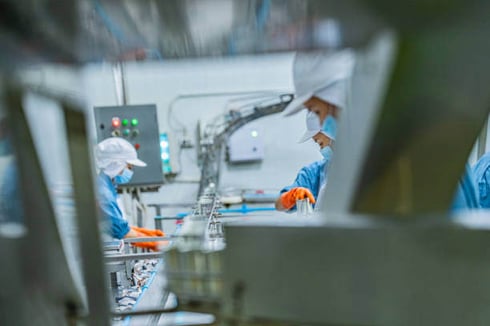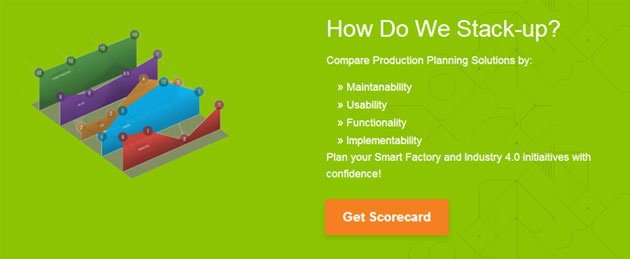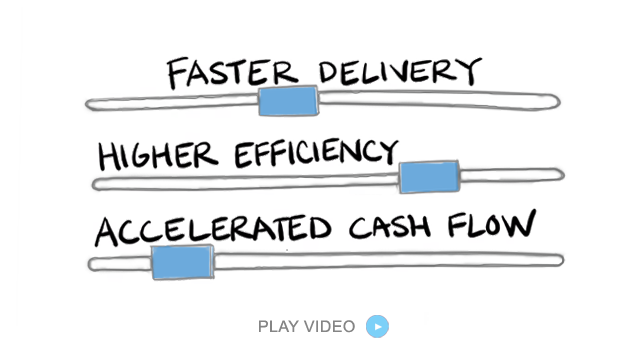Reducing Waste in Food and Beverage Manufacturing: How Smart Planning with PlanetTogether and SAP Integration Drives Efficiency
In food and beverage (F&B) manufacturing, production planners are under mounting pressure to reduce waste while maintaining high throughput, strict quality standards, and on-time deliveries. Waste—whether it's material, time, labor, or energy—directly impacts margins, environmental sustainability, and brand reputation.
Reducing waste isn't just about tightening operations or enforcing lean practices on the shop floor. It begins upstream—right at the planning desk. With smart tools like PlanetTogether Advanced Planning and Scheduling (APS), integrated seamlessly with enterprise systems such as SAP, production planners can take a proactive approach to waste reduction, improve operational visibility, and unlock efficiency gains that extend across the entire facility.
In this blog, we’ll look into how you, as a production planner in an F&B facility, can drive significant waste reduction using digital planning tools—and how integrating APS with SAP can help you maximize results.
Understanding Waste in F&B Manufacturing
The food and beverage industry faces unique types of waste compared to other manufacturing sectors. These include:
Raw Material Spoilage: Due to short shelf lives, improper forecasting, or unplanned downtime.
Overproduction: Producing more than the demand due to poor visibility or lack of synchronization with sales and inventory.
Changeover Losses: Frequent product switching leads to line downtime and material losses.
Human Error: Inaccurate production schedules or misalignment with procurement and logistics.
Energy Inefficiencies: Running lines during low-demand periods or inefficient batch processing.
Packaging Waste: Using the wrong packaging due to last-minute schedule changes or lack of coordination with packing lines.
Waste like this adds up fast. But with the right technology stack and integrated planning, it becomes manageable and even avoidable.

Why Traditional Planning Falls Short
Many production planners still rely on spreadsheets or outdated MRP systems that are static, inflexible, and siloed. These systems often fail to:
Account for real-time capacity constraints
Model batch processes and expiration-sensitive materials
Respond dynamically to changes in demand or supply
Integrate with other departments like procurement, warehousing, and quality control
These shortcomings lead to last-minute firefighting, reactive planning, and increased waste.

Enter PlanetTogether APS: A Planning Game-Changer
PlanetTogether APS is designed to solve these challenges head-on. It’s a visual, interactive, and algorithm-driven planning solution that offers real-time scheduling capabilities based on actual resource availability, constraints, and demand forecasts.
Here's how PlanetTogether helps F&B production planners reduce waste:
Optimized Scheduling with Real-Time Feedback
PlanetTogether automatically generates optimized production schedules that take into account machine capacities, labor availability, setup times, and material expiration dates. This reduces unplanned downtime and minimizes changeovers—key contributors to waste.
Batch Processing and FIFO Compliance
Batch production is central to F&B manufacturing. PlanetTogether enables batch scheduling while ensuring First-In, First-Out (FIFO) usage of raw materials, reducing the risk of spoilage and compliance issues.
What-If Scenario Modeling
Planners can simulate schedule changes to evaluate the impact of production delays, supply shortages, or urgent orders. This proactive capability helps minimize disruptions and the waste they often cause.
Visual Drag-and-Drop Scheduling
The intuitive Gantt chart interface allows planners to manually adjust schedules while getting immediate feedback on downstream effects. This visibility reduces planning errors that can lead to material or time waste.

Enhancing the Power of APS with SAP Integration
While PlanetTogether is powerful on its own, its full potential is unlocked when integrated with SAP—a system many F&B manufacturers already use to manage enterprise-wide operations.
Here’s how the integration creates a waste-reducing ecosystem:
End-to-End Visibility
Data flows seamlessly between SAP and PlanetTogether—sales orders, work orders, inventory levels, BOMs, routings, and more. This connectivity ensures that planners are always working with the latest information, reducing the risk of producing based on outdated or inaccurate data.
Inventory Synchronization
By syncing real-time inventory levels and expiry dates from SAP, PlanetTogether ensures that scheduling decisions are made using accurate raw material data. This alignment is crucial to reducing raw material waste due to spoilage or misallocation.
Faster Response to Demand Changes
Sales order updates or demand fluctuations captured in SAP are reflected in PlanetTogether’s planning engine instantly. Planners can re-sequence or adjust schedules in real time, avoiding overproduction or last-minute scrambles.
Streamlined Procurement Coordination
Integrated planning allows procurement teams (via SAP) to align purchase orders with actual production needs. This avoids the common mismatch between what is scheduled and what is available, cutting down on buffer stock and associated waste.
Automated Feedback Loop
Once a production plan is finalized in PlanetTogether, the updates are sent back to SAP for execution. This closed-loop feedback ensures that execution aligns with planning, reducing communication gaps and execution errors.
Making the Business Case
Reducing waste is not just an operational goal—it’s a strategic priority. It helps improve:
Profitability: Lower waste equals lower cost per unit.
Sustainability: Less material waste and energy consumption improve your ESG performance.
Customer Satisfaction: Better forecasting and planning reduce lead times and stockouts.
Compliance: Reducing expired or misused materials keeps regulators off your back.
With PlanetTogether + SAP integration, you have the digital tools to execute this strategy successfully and consistently.
For production planners in food and beverage manufacturing, reducing waste is no longer just a plant-floor initiative—it starts with smarter, integrated planning. PlanetTogether APS, when connected to SAP, provides the end-to-end visibility and dynamic scheduling tools necessary to optimize production, reduce material losses, and boost overall efficiency.
With digital tools that align your plan with real-world constraints, you don’t just reduce waste—you unlock a smarter, leaner, and more sustainable future.
Are you ready to take your manufacturing operations to the next level? Contact us today to learn more about how PlanetTogether can help you achieve your goals and drive success in your industry.
Topics: PlanetTogether Software, Integrating PlanetTogether, End-to-End Visibility, Food and Beverage Manufacturing, Optimized Scheduling with Real-Time Feedback, Batch Processing and FIFO Compliance, What-If Scenario Modeling, Visual Drag-and-Drop Scheduling, Faster Response to Demand Changes





















LEAVE A COMMENT